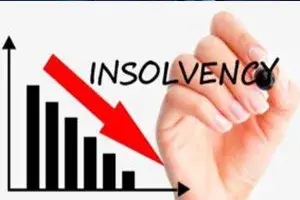Consumer Protection (Direct Selling) Rules, 2021- India
No Action to Recover EMI for Stuck Realty Projects
Stepping Stones for Start-ups in India
Going to NCLT by Financial Creditor under Section 7 of the IBC
India -Consumer Protection (Direct Selling) Rules, 2021

The Department of Consumer Affairs, Ministry of Consumer Affairs, Food and Public Distribution formulated a set of guidelines titled Direct Selling Guidelines, 2016 with the intention to curb the menace of illegal multi-level marketing and pyramid schemes that were masquerading as legitimate businesses in 2016.
Direct Selling Rules, 2021
In order to bring stability in the market, they further introduced the Consumer Protection Direct Selling Rules, 2021 on December 28, 2021 and the recent notification dated April 4, 2022 in order to provide more clarity regarding the compliance of the provisions of the Rules.
The Consumer Protection Direct Selling Rules, 2021 came into force on December 28, 2021. The Rules prohibit participation and/or promotion of pyramid schemes and money circulation schemes. The Direct Selling Rules are applicable to any entity offering goods and services in India, whether or not such entity is established in India. The Direct Selling Rules applies to both Direct Sellers and Direct Selling Entities. Further such entities must comply with the provisions within ninety (90) days from the date of its publication.
Key highlights of Direct Selling Rules, 2021
- Both direct selling entity and direct sellers utilizing e-commerce platforms for sale must comply with the new rules.
- Every direct selling entity must develop a system for consumers to file complaints with its offices, branches or direct salespeople, either in person by mail, telephone, email or through a website.
- Such entities guarantee that ads for the marketing of products or services are accurate in terms of the items or services’ real qualities, access and usage circumstances.
- A direct selling entity that openly or implicitly vouches for the authenticity of the products or services offered, or assures that such goods or services are legitimate, is liable in any action involving the authenticity of such goods or services.
- Every direct selling entity must become a partner in the Central Govt’s National Consumer Helpline’s convergence process.
- State govts. will be required to establish a system to monitor or regulate the operations of direct sellers and direct selling entities under the new laws. Direct selling entities are also responsible for any complaints that arise from the sale of goods or services by its direct sellers.
- Each direct selling entity must establish an appropriate grievance redress framework and post the existing and updated name, contact information including phone number, email address and designation of such officer on its website as well as notably print the website’s specifics on the product information sheet or pamphlet.
- The grievance redressal officer must accept receipt of any consumer complaint within 48 hours of receiving and recourse the complaint normally within one month of receiving, in the event of a wait time of more than a month, the explanations for the delay as well as the measures taken on the complaint must be informed to the complainant in written form.
- Every direct selling entity must nominate a nodal person who is responsible for ensuring compliance with the Act and its regulations, as well as any order on demand issued under the terms of any other legislation now in effect or its rules.
- Every direct selling entity must keep track of all its direct sellers including evidence of identification, address, email and other contact information.
- Direct selling entities shall upon the written request of the consumer following the purchase of any goods or services provide him with data about any direct seller from whom such consumer has made a purchase, including the name, address, email, contact number, or any other information essential for appropriate dispute resolution communication with such direct seller.
- No direct selling entity will, directly or indirectly, misrepresent the quality or characteristics of any of its goods or services by posing as a consume and posting reviews about its goods or services.
- A direct selling entity must oversee the conduct of its direct sellers regardless of the distribution mechanism it uses, and assure compliance with these regulations.
- Every direct selling entity must keep a record of relevant information that allows direct sellers who have been delisted by the direct selling entity to be identified and this list must be publicly disclosed on the direct selling company’s website.
New Compliances under the Direct Selling Rules, 2021
- The Ministry of Consumer Affairs in furtherance of its earlier proposed rules to ensure the compliance of the rules vide letter (No. L-21/1/2022-ICDS [E-27421]) dated April 4, 2022, stated that every direct selling entity shall become a partner in the convergence process of the National Consumer Helpline of the Central Government in order to facilitate the redressal of consumer grievances as per Rule 5 (17) of the CP (DS) Rules, 2021
- These Rules do not provide for distinct registration in respect of a direct selling entity except as mandated in Rule 5 (1) (a) of the CP (DS) Rules, 2021.The declarations/undertakings that have so far been received by the direct selling entities under the CP (DS) Rules, 2021 are deemed to have been withdrawn as they are not mandated by the Rules.
Related Posts
Direct Selling Companies to ensure compliance under Legal Metrology Act and Rules
For Stuck Realty Projects No Action to Recover EMI

By Nihit Nagpal and Anuj Jhawar
The surge in realty projects assuring umpteen homebuyer of the dream of having their own homes have failed to become reality. The aftermath of Real Estate Developer’s inability to deliver projects on time, have left many homebuyers with the additional burdens of paying EMI without having anything in hands.
The Delhi High Court recently in Ashish Tiwari v. Union Bank of India[1] dated January 31, 2022, hearing a number of petitions under Articles 226 and 227 of the Constitution of India of Homebuyers against Banks/ Housing Finance Companies (HFC) disbursing the loan amount through subvention schemes to the developers without even examining the fact as to whether the developers are in a position to complete the construction gave interim relief directing that banks/HFC shall not take any coercive action against the homebuyers to recover EMIs for pending projects where the builders were supposed to pay the EMIs till possession.
Ashish Tiwari v. Union Bank of India- Brief Facts
The Petitioners booked flats with the builders and took home loans under the subvention scheme by entering into a Tripartite Agreement with the builders and the banks. The subvention scheme provided for the banks to disburse the sanctioned amount directly to the accounts of the builders, who were then to pay EMIs on the sanctioned loan amount, until possession of the flats is handed over to the homebuyers. However, builders started defaulting in paying the EMIs to the banks as per the Tripartite Agreement, and subsequently the banks initiated action against the homebuyers to recover the EMIs instead.
Contention by Petitioners
The Petitioners raised the contention that the Banks/ HFCs have given funds to the builder in flagrant violation of the directions issued by the RBI and the NHB wherein the banks have been directed to exercise due caution while disbursing of housing loans sanctioned to individuals under subvention scheme. The Petitioners further submitted that the Respondent/ Banks/HFCs cannot claim payment towards the loan amount, which they in this present matter pre-maturely disbursed to the builders. The Petitioners also submitted that the banks, have in fact, acted in collusion with the builders, in releasing the loan amount even without examining whether the builder was in a position to complete the project or not. The Petitioners in their support placed reliance on the orders passed in Hridesh Kumar Pathak v. Bank of Maharashtra[2] and Jayanta Kumar Mishra and Another v. Union of India[3], wherein the Division Bench, by way of interim orders, restrained the banks from taking any coercive steps against the Petitioners or the homebuyers.
Contention by Respondents/ Banks/HFC
The Respondents submitted that once the Petitioners had knowingly signed a Tripartite Agreement, they cannot now shift the blame solely on the banks for any default on the part of the builders, and evade their liability to re-pay EMIs in respect of the loans issued in the favour of the Petitioners.
Contention On Behalf Of RBI
Further, the learned Senior Counsel, Mr. V. Giri appearing for the RBI, submitted that the banks are required to comply with the directions and guidelines issued by the RBI whereby the banks were directed to ensure that the disbursal of the loan amount shall be strictly linked with the stages of construction, and no upfront disbursement shall be made in case of under-construction projects.
Order
The Hon’ble Justice Rekha Palli noted relevant extracts of the RBI circular dated 01.07.2015, pertaining to the issue of subvention schemes or “innovative housing loan schemes” wherein it was observed that such housing loan products are likely to expose the banks as well as their home loan borrowers to additional risks e.g. in case of dispute between the individual borrowers and builders, default or delayed payment of EMIs by the builder during the agreed period on behalf of the borrower, non-completion of the project on time, etc. The Hon’ble Justice further noted circular dated 09.07.2019 issued by the NHB, wherein it was observed that the housing finance companies (HFC’s) shall desist from offering loan products involving servicing of the loan dues by builders on behalf of the borrowers and the disbursal of housing loans sanctioned to the individuals shall be closely linked to the stages of construction of the housing projects and disbursal shall not be made in case of incomplete or under-construction projects.
The Hon’ble Justice vide this interim order observed that despite the banks having disbursed the loan amounts when the construction was admittedly incomplete, the Petitioners were being asked to pay the amount that was initially required to be paid by the builders.
The Court further observed that the Petitioners who are individual homebuyers are also facing grave financial hardship on account of the devastating impact of the Covid-19 pandemic. Therefore, the Petitioners have made out a prima facie case, balance of convenience also lies with the Petitioner and grave and irreparable loss would be caused to the homebuyers if they are forced to pay the EMIs in this challenging times due to the default of the builders. Thus, the Court vide this order granted an interim stay in favour of the homebuyers against the recovery of EMIs for pending projects where the builders were supposed to pay the EMIs till the possession.
Conclusion
This interim order in favour of the homebuyers, highlights the sorry state of affairs of the construction industry, where without any possession, innocent homebuyers are being forced by the banks/HFC’s to pay EMIs due to the default of the builders. Thus, the approach of the Hon’ble Delhi High Court in interim order restraining the Banks/HFC’s from taking any coercive steps against the homebuyers is a big positive steps, and especially in such cases where the builders in collusions with the banks/ HFC’s have flagrantly violated the guidelines of the Reserve Bank of India and the National Housing Bank.
[1] W.P. (C) 10223/2021
[2] W.P. (C) 6774/2021
[3] W.P. (C) 10759/2021
Related Posts
In India Stepping Stones for Start-ups

By Rupin Chopra and Apalka Bareja
What is a start-up?
The Department for Promotion of Industry and Internal Trade (DPIIT) vide its notification no. G.S.R. 127(E)[1], renders the definition for a “start-up” in India as under:
An entity shall be considered as a Startup:
- Upto a period of ten years from the date of incorporation/ registration, if it is incorporated as a private limited company or registered as a partnership firm or a limited liability partnership LLP in India.
- Turnover of the entity for any of the financial years since incorporation/ registration has not exceeded INR 100 Crores;
- Entity is working towards innovation, development or improvement of products or processes or services, or if it is a scalable business model with a high potential of employment generation or wealth creation.
That an entity formed by splitting up or reconstruction of an existing business shall not be considered a ‘Startup’.
Learn more about Start-ups .
For successful operation and running of a start-up, there are certain intrinsic factors that a start-up should adhere to such as the business structure, employees management, legal compliances. Some intrinsic points have been discussed as under:
Registration of Start-ups in India
One of the first and most important step for an entity that satisfies the aforesaid parameters listed for eligibility should be registering the start-up.
Why should a Start-up be registered?
- Tax Incentives: Eligible start ups can be exempted from paying income tax for three consecutive financial years out of their first ten years since incorporation. For a start up to be eligible for this, the following criteria needs to be met:
- The entity should be a DPIIT recognized start up;
- Only Private Limited Companies or Limited Liability Partnerships are eligible for tax exemption under Section 80IAC;
- The start up should have been incorporated after 1st April, 2016.
Eligible start ups will be allowed a 100% tax rebate on profit, provided their annual turnover doesn’t exceed 25 crores. This is integral for start ups to meet their working capital needs.
- Long Term capital gains exempted: Exemption can be availed if such capital gains are invested in such funds as notified by the Government of India. By virtue of the newly added Section 54 EE in the Income Tax Act, eligible start ups can exempt their tax on long-term capital gains if such long-term capital gains or a part of it is invested in a fund notified by the central government within a period of six months from the date of transfer of the asset. The maximum amount that can be invested is that of RS. 50 Lakh, and this benefit can be availed only if the amount remains invested in the fund for a minimum period of three years.
- Tax exempted on investments made above fair market value: The government has exempted the tax being levied on investments above the fair market value in eligible start ups. Such investments include investments made by resident angel investors, family or funds which are not registered as venture capital funds. Also, the investments made by incubators above fair market value is exempt.
- Rebate in IPR filings: Entitled to reduced Trademark and Patent filing fees in India. According to the Trademark Rules 2017, a new fee structure has been adopted for start ups, keeping in mind that they cannot afford the same fees as that of other applied the fee structure for a start up is half than that of other applicants. According to the Patent Rules Amendment of 2019, a new fee structure is given for start ups, and this classification is done on the basis of the nature of the applicant. It thoughtfully keeps in mind that start ups cannot afford high fees for filing. Therefore, fee for start up is half than that of other applicants.
- Easy winding up of Company: The Company can be wound up, if need be, under 90 days, under the Insolvency and Bankruptcy laws. According to the Insolvency and Bankruptcy Board of India (Fast Track Resolution Process for Corporate Persons) Regulations, 2017, has provided for the fast-track resolution of insolvency. The time given for the completion of the fast-track resolution is 90 days, as opposed 180 days in the usual Corporate Insolvency Resolution Process. A start-up as defined in the Government of India notification issues by the Ministry of Commerce and Industry is one of the eligible corporate debtors. To avail the fast-track insolvency resolution process. The process of recognition as a “Start-up” shall be through an online application made over the mobile app/ portal set by the Department of Industrial policy and Promotion. A start up shall to submit the online application and the Certificate of Incorporation/Registration along with other relevant details Start-ups also have to submit a write-up about nature of business in order to show that it is working towards innovation, development or improvement of products or process or services or its scalability in terms of employment generation or wealth creation. This is essential to ensure that the practises of the start up are in line with the initiatives of the government to boost their Start Up India initiative.
- Labour Law and environment law compliances: Allowed to self-certify compliance for 6 labour laws and 3 environmental laws, namely:
- Other Constructions Workers’ (Regulation of Employment & Conditions of Service) Act, 1996.
- The Inter-State Migrant Workmen (Regulation of Employment & Conditions of Service) Act, 1979.
- The Contract Labour (Regulation and Abolition) Act, 1970
- The Employees’ Provident Funds and Miscellaneous Provisions Act, 1952
- The Employees’ State Insurance Act, 1948
- Industrial Employment (Standing Orders) Act, 1946
- Trade Unions Act, 1926
- Industrial Disputes Act, 1947
This self-certification is permitted so that start ups can familiarize themselves with new labour and environment laws and with the implementing authorities. The validity of this leeway given is for a period of three years. In these three years, there will be no inspection under labour laws for start-ups, as it is for other entities. However, even start up can be subject to inspection but only on receiving a written complaint of violations.
Start-Ups should obtain appropriate business licenses
The law and regulations in India, mandate obtaining of permissions, licenses and compliances of regulations under various laws for setting up and carrying on of businesses. For instance, to commence a restaurant, FBOs (Food Business Operations), manufacture and sell food related items, an entity has to obtain Food FSSAI license. Similarly, mandatory licenses and declarations are also to be made under the Legal Metrology Act and Packaging Rules.
To read more about Food laws and Legal metrology read.
Intellectual Property Filings by Start-ups
As mentioned above, the Intellectual Property Act and Rules in India entail rebated IPR filings for start-ups in India. Additionally, the Government also has the provision of IPR facilitators, who are empanelled by the Government and assist start-ups in successful prosecution and registration of IPR.
It is crucial that any entity including start-ups adequately protect their innovations, inventions, brand name under the appropriate IP laws. On registration, the owner of IPR has the right to stop the misuse of his IPR by any third party and also enforce his rights in a Court of law in India.
In the recent past, owing to increased IPR awareness and increase in IP-intensive industries, a lot of IPR filings have been done by start-ups and MSME’s in India.
Comply with the Labour Laws
Any entity including Start-ups shall necessarily comply with the various labour laws prevailing in India.
To know more about labour laws in India .
There are various labour laws enacted in India and to make the process more efficient for start-ups registered under the Start-up India initiative, a start-up can file a self- certification under 9 labour laws (discussed above).
Conclusion
The paper enumerates various essential factors which a start-up shall be aware about and also adhere to for increasing the chances of effective growth for a start-up in a substantial way.
[1] https://www.startupindia.gov.in/content/dam/invest-india/Templates/public/198117.pdf
Under Section 7 of the IBC Going to NCLT by Financial Creditor

By Nihit Nagpal and Anuj Jhawar
Insolvency proceedings under the Insolvency and Bankruptcy Code, 2016 are overseen by the relevant adjudicating authority. The National Company Law Tribunal (NCLT) is the adjudicating authority involved in the insolvency proceedings of companies and Limited Liability Partnerships (LLPs), which are referred to as corporate debtors[1]. To initiate the Corporate Insolvency Resolution Process (CIRP) against a corporate debtor, the NCLT bench having territorial jurisdiction over the debtor’s registered office must be approached[2]. An application for initiating CIRP can be filed with the NCLT by the debtor’s financial creditors, operational creditors, or corporate applicants representing the debtor under Sections 7, 9, or 10 respectively.
Who is a Financial Creditor?
The Insolvency and Bankruptcy Code has distinguished operational creditors from financial creditors by differently defining the two kinds of debts. Section 5(8) of the Code defines financial debt as a debt along with interest, which is disbursed against the consideration for the time value of money. The following debts are included in the definition:
- Money borrowed against interest payments.
- An amount raised by acceptance under an acceptance credit facility or its dematerialized equivalent.
- An amount raised from a note purchase facility or from the issue of bonds, notes, debentures, or other similar financial instruments.
- The liability in respect of a lease or hire purchase agreement that is considered a finance or capital lease according to the relevant accounting standards.
- Receivables that are sold or discounted, except receivables sold on a non-recourse basis.
- An amount raised under any transaction having the effect of a borrowing. This includes amounts raised from allottees of real estate projects.
- A derivative transaction entered into with the goal of seeking protection against or benefit from fluctuation in any rate or price. Only the market value of such transaction will be taken into account to determine its valuation.
- A counter-indemnity obligation in respect of any instrument issued by a bank or other financial institution, including a guarantee, indemnity, bond, or documentary letter of credit.
- The liability in respect of any guarantee or indemnity for the debts referred to in the preceding 8 points.
A financial creditor is any person to whom a financial debt is owed, including a person to whom a financial debt has been legally assigned or transferred[3]. The Report of the Insolvency Laws Committee clarified that even authorized representatives of financial creditors, such as guardians, administrator or executor of estate, or debenture trustee are eligible to initiate CIRP[4].
In Anuj Jain, Interim Resolution Professional for Jaypee Infratech Ltd v Axis Bank Ltd, the Hon’ble Supreme Court decided the question of whether a creditor who has been given security by the corporate debtor for a third-party debt can be considered a financial creditor[5]. The Court answered in the negative, holding that for a person to be considered the financial creditor of a corporate debtor, it has to be shown that the debtor owes him a financial debt. While a person having a security interest over the corporate debtor’s assets is definitely owed a debt, it is not a financial debt as defined under Section 5(8) of the Code. Further, the Court reasoned that a third-party having a security interest does not have the stake in the corporate debtor’s growth which the Code envisions for financial creditors. Financial creditors under the Code are supposed to be interested in rehabilitating and reviving a corporate debtor, and not just in realising the value of their security.
In Pioneer Urban Land and Infrastructure Ltd v Union of India, the Supreme Court upheld the constitutional validity of the provision considering allottees under real estate projects to be financial creditors[6]. The Court observed that money raised from allottees forms a major part of the funding of real estate projects, and such projects are often delayed. As the allottees are ultimately going to be living in the apartments under construction, they are directly interested in the future of the companies constructing them, and deserve the right to initiate CIRP.
Applying to the NCLT under Section 7 of the Code
CIRP can be initiated only if the corporate debtor defaults on a debt that meets or exceeds the minimum threshold value prescribed under Section 4 of the Code[7]. The prevailing threshold is a debt of at least 10 million INR[8].
As per Section 7(1) of the Code, an application for initiating CIRP can be filed individually by a financial creditor, or jointly with other financial creditors, or by a person on behalf of a financial creditor who has been empowered to do so by a notification of the Central Government. In Palogix Infrastructure Pvt Ltd v ICICI Bank Ltd, the learned National Company Law Appellate Tribunal (NCLAT) held that a financial creditor can only act through an authorised representative[9]. Therefore, a general power of attorney holder cannot file an application under Section 7, unless he has been specifically authorised to do so by the financial creditor.
If the financial creditors referred to in clauses a and b of Section 21(6A) wish to initiate CIRP, they can only do so if 100 of them, or 10% of them in the same class (whichever is fewer) file jointly. Similarly, applications by allottees in real estate projects can only be filed jointly by at least 100 allottees of the same project, or 10% of the total allottees of a project, whichever is fewer.
According to Rule 4 of the Insolvency and Bankruptcy (Application to Adjudicating Authority) Rules, 2016, where the applicant under Section 7 is the assignee or transferee of a financial debt, the application must be accompanied by a copy of the assignment or transfer agreement and any other documents required to demonstrate that the debt was assigned or transferred to the applicant. The applicant must also dispatch a copy of the application to the registered office of the corporate debtor by post. If multiple financial creditors file an application jointly, they can nominate one creditor to act on their behalf.
Form 1 attached with the Rules prescribes the following particulars to be included in an application under Section 7:
- Particulars of applicant, such as name, date of incorporation, registered office address, etc.
- Particulars of the corporate debtor, such as name, date of incorporation, details of share capital, and registered office address.
- Name, address, email address, and registration number of the insolvency professional proposed as interim resolution professional, if one is proposed.
- Particulars of financial debt, namely, the total amount of debt granted, dates of disbursement, amount claimed to be in default, and the date on which the default occurred.
- Documents and records proving the existence of the financial debt and default, such as copies of a court order adjudicating on the default, latest copy of financial contract under which the debt was granted, record of default available with a credit information company, etc.
Once an application has been received by the NCLT, it must ascertain the existence of the default within 14 days[10]. If the NCLT is satisfied that a default has occurred, the application is complete, and there are no disciplinary proceedings against the proposed interim resolution professional, it must admit the application[11]. If these parameters are not satisfied, the application will be rejected[12]. However, before rejecting the application, the NCLT will notify the applicant about its defects and allow the applicant an opportunity to correct them within 7 days from the receipt of the notice[13].
Conclusion
Section 7 of the Insolvency and Bankruptcy Code, 2016, empowers financial creditors to initiate CIRP against a corporate debtor. In contrast to operational creditors, a financial creditor’s relationship with the corporate debtor is purely based on a financial contract. The Code along with its accompanying Rules and Regulations provides a detailed procedure for filing an application under Section 7, and a financial creditor must diligently comply with each requirement to ensure the admission of his application.
[1] The Insolvency and Bankruptcy Code, 2016, No. 31 of 2016, §60.
[2] The Insolvency and Bankruptcy Code, 2016, No. 31 of 2016, §60.
[3] The Insolvency and Bankruptcy Code, 2016, No. 31 of 2016, §5(7).
[4] Ministry of Corporate Affairs, Report of the Insolvency Laws Committee (March 26, 2018), 9.3.
[5] 2020 SCC OnLine SC 237.
[6] (2019) 8 SCC 416.
[7] The Insolvency and Bankruptcy Code, 2016, No. 31 of 2016, §4.
[8] Ministry of Corporate Affairs, S.O. 1205(E).
[9] Company Appeal (AT) (Ins.) No. 30 and 54 of 2017.
[10] The Insolvency and Bankruptcy Code, 2016, No. 31 of 2016, §7(4).
[11] The Insolvency and Bankruptcy Code, 2016, No. 31 of 2016, §7(5)(a).
[12] The Insolvency and Bankruptcy Code, 2016, No. 31 of 2016, §7(5)(b).
[13] The Insolvency and Bankruptcy Code, 2016, No. 31 of 2016, §7(5)(b).
Related Posts


